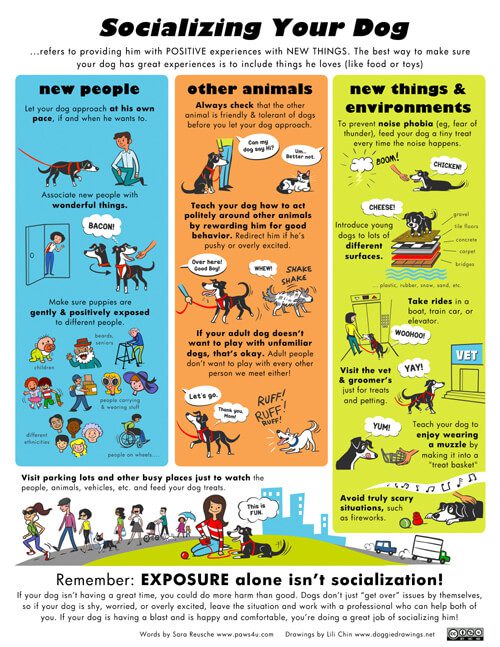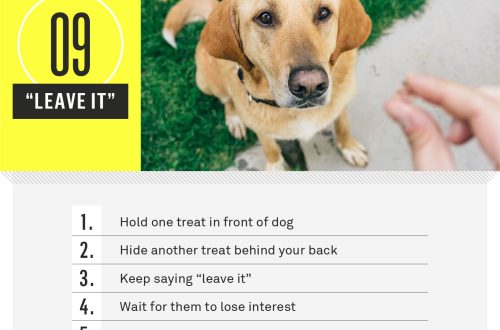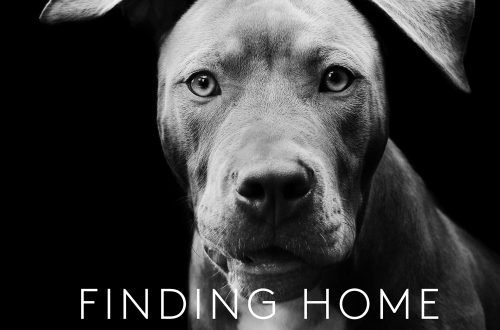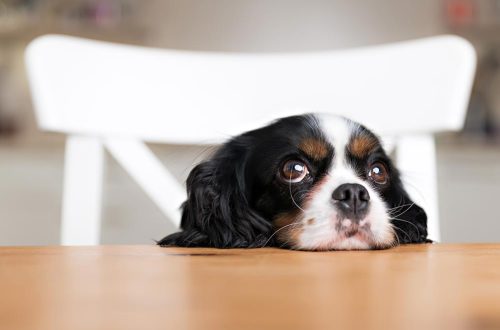
Як сацыялізаваць свайго шчанюка
Congratulations! It’s time to take the puppy home! First of all, you need to make sure that your home is safe for a new tenant, choose a veterinarian and buy a quality balanced puppy food, but probably the most interesting thing for you will be socializing him. If you like to spend time outside the home, it is very important that your ward knows how to behave during trips to visits and in public places.
According to the Society for the Humane, “The most important training period in a dog’s life begins around 3 weeks of age and ends at 16 to 20 weeks of age.” Most often, puppies get to a new home at the age of 7 to 12 weeks. When a toddler meets people and other animals before entering a permanent home, he craves companionship.
Socializing a puppy in your home
Socialization starts at home. If you have just adopted a dog, it must go through a period of adaptation. The puppy may start to worry about being alone if he is used to spending time with other animals and people. Free up your schedule to spend more time with your pet at home. Praise the puppy for independent play. Encouraging independence is part of the socialization process that is necessary to train the animal not to become anxious when you are not around.
If you have other pets, you need to introduce them to the new occupant of the house in a safe environment. Never force animals to communicate. Let them sniff each other – literally and figuratively. Limit their interaction at first, even if it seems to you that the pets get along well from the first minutes, gradually increasing the length of their stay together. This will allow the puppy to understand that he can withdraw from communication if he becomes uncomfortable, and also that you are the head of the house. It will also help alleviate any stress your other pets may be experiencing due to the arrival of a new occupant.
In your home, there may be things that the dog has never encountered. By meeting “dangers” and overcoming them at home, the puppy will be better prepared to communicate outside of it. If the puppy is afraid of something specific, such as a running vacuum cleaner, turn it off and let your pet explore it when it is off. Then, when the vacuum cleaner is in your dog’s field of vision but not next to him, turn it on so he can see how it works. If you work with your puppy’s fears in a safe way, he won’t get anxious in new situations.
Once the puppy is comfortable in your home, with family and pets, invite friends, relatives and even their pets! A socially trained dog should not show territorial instincts, so start inviting new people at an early age. In the presence of guests, allow only those forms of behavior that you expect from a well-mannered dog. Don’t let your puppy jump on guests or bark at cars pulling up to your house. It will also be helpful to teach your friends and relatives not to provoke bad behavior. For example, don’t let them feed human food to the puppy so he doesn’t wait for it when he grows up.
Socialization of a puppy in society
It is very important to take your little puppy out of the house and into a new environment. You don’t want your dog to be afraid of crowds or become aggressive when people or animals approach him. By introducing your puppy to quiet and busy places, you will teach him to feel free in different environments when he grows up.
Consider the age of the people with whom the dog has the opportunity to communicate. If you only have adults in your home, it’s important to introduce your puppy to children in public places, even if not directly. Take him for a walk in the park where the children play so that he can witness their energy and enthusiasm. Remember to maintain a safe distance until the puppy has successfully completed the training program. Group obedience classes are also a great place to teach your puppy how to interact with other people and dogs in a controlled environment.
When your puppy is ready to meet new people, teach him how to greet them properly. First, make sure the pet is not in an enclosed space. The feeling of an enclosed space can excite the puppy. Then make sure he is calm and sitting still before letting the person greet him. If necessary, “instruct” the stranger how best to behave with your puppy so as not to frighten him, and the acquaintance would be pleasant for both. Don’t let anyone rush towards the dog, this can make him feel threatened, and don’t let him get close to his face. Rewarding good behavior will help reinforce.
Your dog will quickly learn to communicate if you always maintain a calm and safe environment around him. Remind your friends, relatives, and strangers not to impose your company on your dog, and in the end, he will feel comfortable and will be happy to make new friends.





